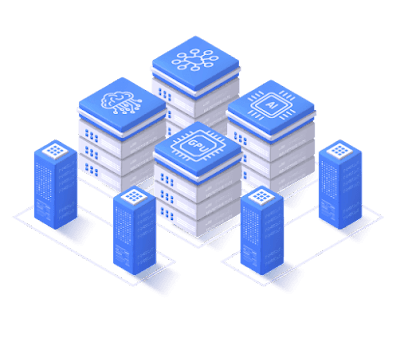Powerful dedicated cloud to host streaming videos
If you're looking to host streaming videos on a dedicated cloud server, there are several options to consider. Here are some factors to consider when choosing a powerful dedicated cloud for hosting streaming videos:
Bandwidth: Make sure your dedicated cloud server has enough bandwidth to handle the volume of video streaming traffic you anticipate. High-quality video streaming can require significant bandwidth, so be sure to choose a server with a robust network connection.
Storage: You'll need ample storage space to store all your
video files, as well as backups and other data. Look for a server that offers
enough storage for your current needs, with room to grow as your library
expands.
Processing power: Hosting streaming video can be
CPU-intensive, particularly if you're serving up high-resolution content or
dealing with a large number of simultaneous streams. Choose a server with a
powerful processor to ensure smooth playback and minimize buffering.
Content delivery network (CDN): A CDN can help speed up
video delivery and reduce latency by caching content on servers located closer
to the end-user. Look for a dedicated cloud provider that offers CDN
integration to improve the viewing experience for your users.
Some of the top cloud providers that offer powerful
dedicated servers for video streaming include Amazon Web Services (AWS), Google
Cloud, and Microsoft Azure. Each of these providers offers a range of dedicated
server options with different levels of performance and customization to suit
your needs. It's worth taking the time to research each provider and compare
their offerings to find the best fit for your streaming video hosting
requirements.
Can distributed servers work for streaming videos
Yes, distributed servers can work well for streaming videos,
especially for large-scale video streaming services. In fact, many popular
video streaming services like Netflix, Hulu, and YouTube use distributed server
architectures to deliver their content.
Distributed server architectures involve distributing
content across multiple servers and locations, so that users can access the
content from the server that's closest to them, reducing latency and buffering.
This is achieved through content delivery networks (CDNs), which replicate
content across multiple servers and locations.
CDNs work by caching content on servers located around the
world and delivering it to users from the server that's geographically closest
to them. This reduces the distance that data has to travel, improving the speed
and reliability of video streaming.
Distributed server architectures also offer scalability, as
new servers can be added to the network as demand for video streaming
increases. This ensures that the service can handle high volumes of traffic
without slowing down or crashing.
Distributed server architectures can be an effective way to
deliver high-quality video streaming at scale, and are a popular choice for
large video streaming services.
What is load balancing?
Load balancing is the process of distributing workloads
across multiple computing resources, such as servers or virtual machines, in
order to optimize performance, maximize resource utilization, and improve the
overall reliability and availability of the system.
In a load-balanced system, incoming requests are directed to
multiple servers in a way that ensures that the workload is evenly distributed
across all available resources. This helps prevent any one server from becoming
overloaded or overwhelmed, which could lead to slow response times or system
crashes.
Load balancing can be achieved through a variety of
techniques, including:
Round-robin: Requests are sent to each server in turn, in a
rotating fashion.
Least connections: Requests are sent to the server with the
fewest active connections at the time.
IP hash: Requests are directed to a specific server based on
a hash of the client's IP address.
Session persistence: Requests from the same client are sent
to the same server to maintain session state.
Load balancing can be implemented at different layers of the
technology stack, including the application layer, transport layer, and network
layer. It can be accomplished using dedicated hardware load balancers or
through software load balancers that run on virtual machines or containers.
Load balancing is an important technique for improving the
scalability, availability, and performance of distributed systems, and is
commonly used in cloud computing and web applications.




Comments
Post a Comment